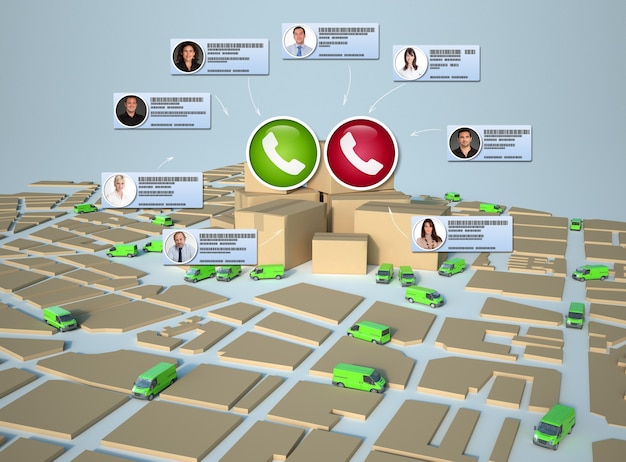Hurricane Season: New Emergency Preparedness Guidelines Released

Anúncios
New emergency preparedness guidelines have been released ahead of the hurricane season to ensure residents are well-prepared and informed about the latest safety measures and resources.
As hurricane season approaches, it’s crucial to stay informed and prepared. The latest emergency preparedness: new guidelines released ahead of hurricane season offer updated strategies and resources to help you protect yourself, your family, and your property.
Anúncios
Understanding the New Emergency Preparedness Guidelines
Staying ahead of hurricane season requires understanding the latest safety recommendations. These new guidelines focus on proactive measures to minimize risks and damage.
The recent updates emphasize community resilience and individual readiness. Knowing the specifics can make a significant difference in your safety and preparedness levels.
Anúncios
Key Updates in the Guidelines
The new emergency preparedness guidelines bring several notable changes aimed at enhancing safety and efficiency during hurricanes.
- Enhanced Evacuation Routes: Clearly marked and improved evacuation routes to ensure smoother and quicker departures.
- Updated Communication Protocols: New communication strategies for disseminating critical information during a hurricane.
- Community Resource Centers: Establishment of additional resource centers offering support and supplies.

These updates are designed to improve the overall effectiveness of emergency responses. By understanding and implementing these changes, communities can better protect themselves.
In conclusion, staying informed about the new guidelines is essential. It prepares you to take the necessary steps to ensure your safety and the safety of those around you during hurricane season.
Creating a Comprehensive Emergency Plan
A comprehensive emergency plan is the backbone of your hurricane preparedness strategy. It outlines what to do before, during, and after a hurricane.
This plan should be tailored to your specific needs and circumstances. A well-thought-out plan minimizes panic and maximizes safety.
Steps to Develop Your Plan
Creating an effective emergency plan involves several key steps. These steps help ensure you are fully prepared for any situation.
- Identify Local Risks: Understand the specific risks in your area, such as flooding or high winds.
- Establish Communication Channels: Set up multiple ways to receive alerts and updates.
- Designate Meeting Points: Choose safe meeting points both within and outside of your neighborhood.
Having a solid plan in place will not only provide peace of mind but also significantly improve your ability to respond effectively during a hurricane.
In summary, developing a comprehensive emergency plan is a critical step in preparing for hurricane season. It enables you to act quickly and methodically, reducing potential harm.
Assembling Your Hurricane Preparedness Kit
A well-stocked hurricane preparedness kit is essential for surviving the storm and its aftermath. It contains supplies that can help you stay safe and self-sufficient.
This kit should be stored in an easily accessible location. Make sure everyone in your household knows where it is and what it contains.

Essential Items for Your Kit
Your hurricane preparedness kit should include a variety of essential items. These items will help you manage during and after the storm.
- Water: At least one gallon per person per day for several days.
- Non-Perishable Food: A supply of ready-to-eat canned goods, energy bars, and dried fruits.
- First-Aid Kit: A comprehensive kit with bandages, antiseptic wipes, pain relievers, and any personal medications.
- Flashlight and Radio: Battery-powered or hand-cranked devices for reliable communication.
Remember, the more complete your kit, the better prepared you will be. Regularly check and replenish your supplies to ensure they are always ready.
Ultimately, assembling a hurricane preparedness kit is a vital part of your overall strategy. Being well-equipped significantly enhances your ability to cope with the challenges a hurricane presents.
Securing Your Home and Property
Securing your home and property before a hurricane is crucial to minimize damage. Taking proactive steps can protect your investment and ensure your safety.
This involves both structural reinforcements and securing outdoor items. A well-prepared home is more likely to withstand the storm’s impact.
Practical Steps for Home Security
Securing your home requires several practical steps. These steps range from reinforcing windows to trimming trees.
- Board Up Windows: Use plywood or storm shutters to protect windows from flying debris.
- Reinforce Doors: Ensure doors are sturdy and properly secured.
- Trim Trees: Cut back any branches that could fall on your home.
These measures not only protect your property but also reduce the risk of injuries from flying debris. It’s a worthwhile investment in your safety and security.
In conclusion, securing your home is a key aspect of hurricane preparedness. Proactive measures significantly reduce potential damage and protect your well-being.
Understanding Evacuation Procedures
Understanding evacuation procedures is essential for your safety during a hurricane. Knowing when and how to evacuate can save lives.
Evacuation orders are issued when the risk is too high to remain in your home. It’s crucial to follow these orders promptly.
Key Aspects of Evacuation
Effective evacuation involves understanding several key aspects. These include designated routes, shelter locations, and communication protocols.
- Know Your Evacuation Route: Familiarize yourself with the designated evacuation routes in your area.
- Identify Shelter Locations: Locate nearby shelters and understand their policies.
- Stay Informed: Monitor local news and official channels for updates and instructions.
By understanding and adhering to these procedures, you can ensure a safer and more organized evacuation.
In summary, being knowledgeable about evacuation procedures is a critical component of hurricane preparedness. It ensures you can respond quickly and safely when evacuation orders are issued.
Staying Informed and Connected
Staying informed and connected is vital during hurricane season. Access to accurate information can help you make informed decisions and stay safe.
This involves monitoring weather forecasts, emergency alerts, and local news. Reliable information is your best defense against misinformation and panic.
Effective Communication Channels
Utilizing effective communication channels is essential for receiving timely updates. These channels can provide crucial information during a hurricane.
- Local News Stations: Tune into local TV and radio for weather updates and emergency announcements.
- Emergency Alert Systems: Sign up for local emergency alert systems to receive notifications on your phone.
- Social Media: Follow official government and emergency management accounts for real-time updates.
Maintaining connectivity with these channels ensures you have the information you need to stay safe and make informed decisions.
Ultimately, staying informed and connected is a key part of your hurricane preparedness strategy. It empowers you to take proactive measures and respond effectively to changing conditions.
| Key Point | Brief Description |
|---|---|
| ⚠️ New Guidelines | Updated safety measures for hurricane season. |
| 🏠 Home Security | Steps to protect your property from hurricane damage. |
| 🎒 Preparedness Kit | Essential supplies for survival during and after the storm. |
| 🗺️ Evacuation | Understanding routes and procedures for safe evacuation. |
Frequently Asked Questions
▼
The key updates include enhanced evacuation routes, updated communication protocols, and the establishment of additional community resource centers to support residents during hurricane season.
▼
Start by identifying local risks, establishing communication channels, designating meeting points, and reviewing your plan regularly to ensure it meets your family’s needs and local requirements.
▼
Your kit should include water, non-perishable food, a first-aid kit, a flashlight, a radio, extra batteries, personal hygiene items, and any necessary medications for your family’s health.
▼
Board up windows, reinforce doors, trim trees, secure outdoor items, and ensure your roof is in good condition to minimize the risk of damage from high winds and flying debris during the storm.
▼
Monitor local news stations, sign up for emergency alert systems, and follow official government and emergency management accounts on social media to receive real-time updates and essential information.
Conclusion
Preparing for hurricane season involves understanding the new guidelines, creating a comprehensive emergency plan, and staying informed. By taking these steps, you can safeguard your home and family, ensuring resilience during severe weather.